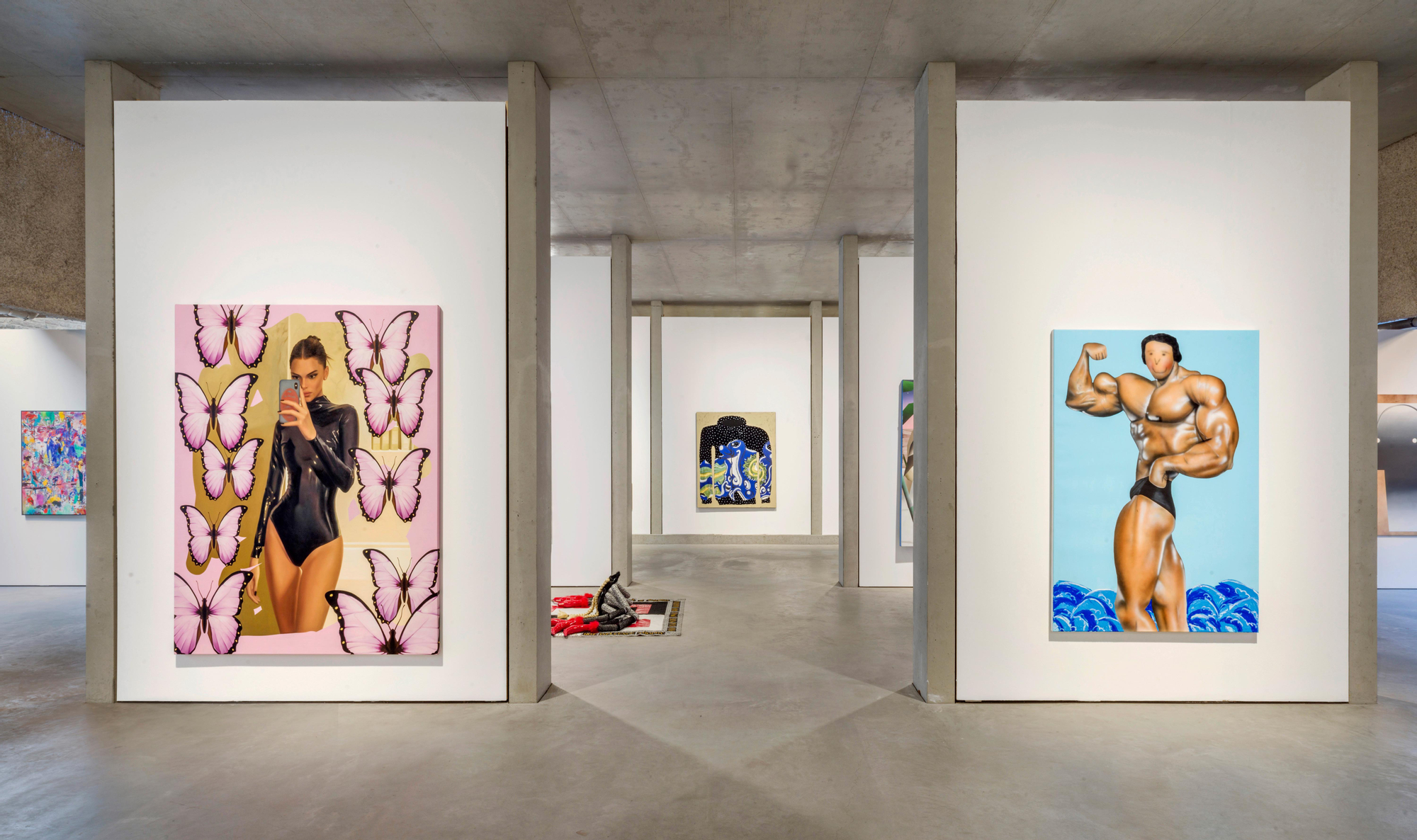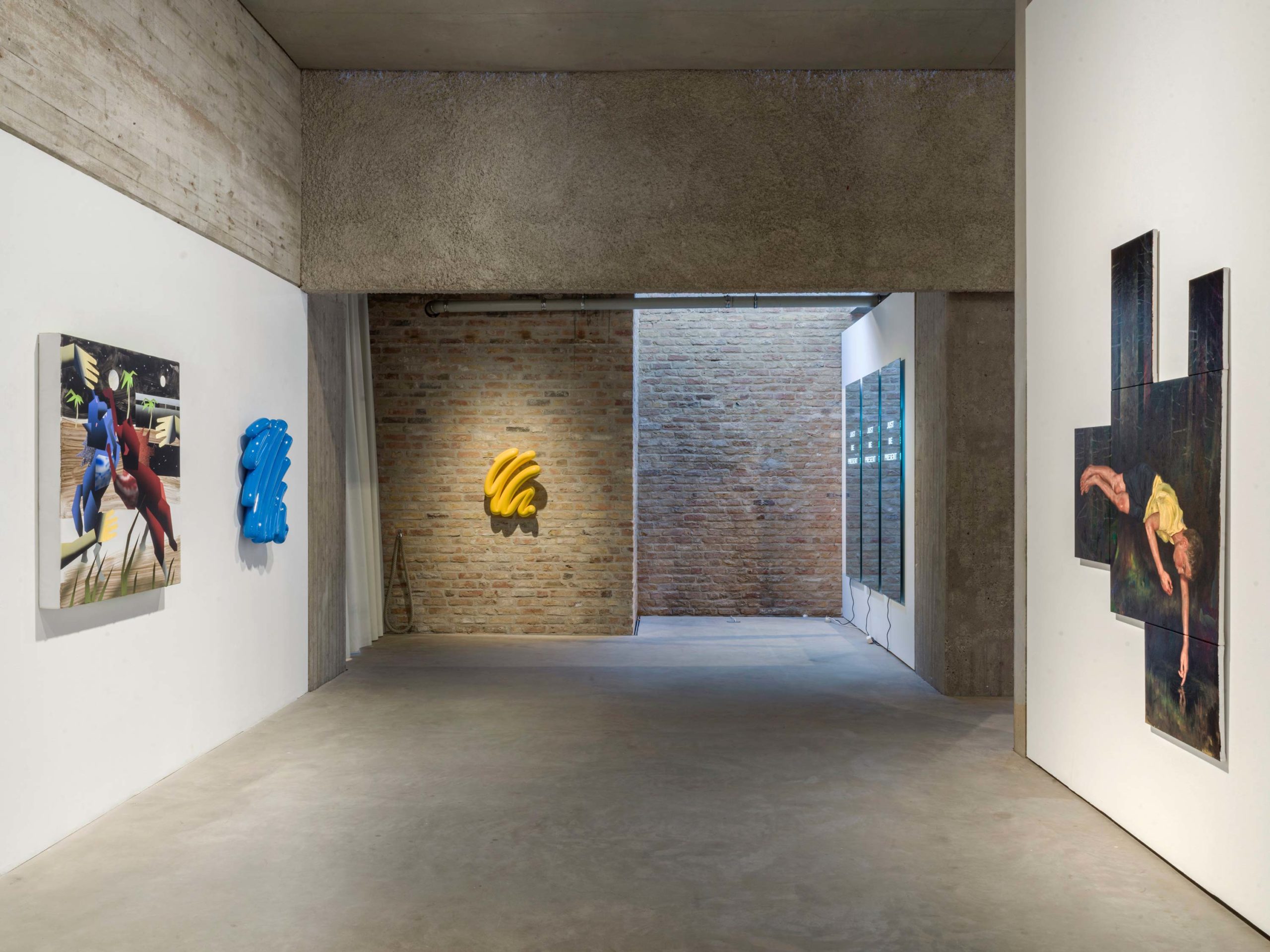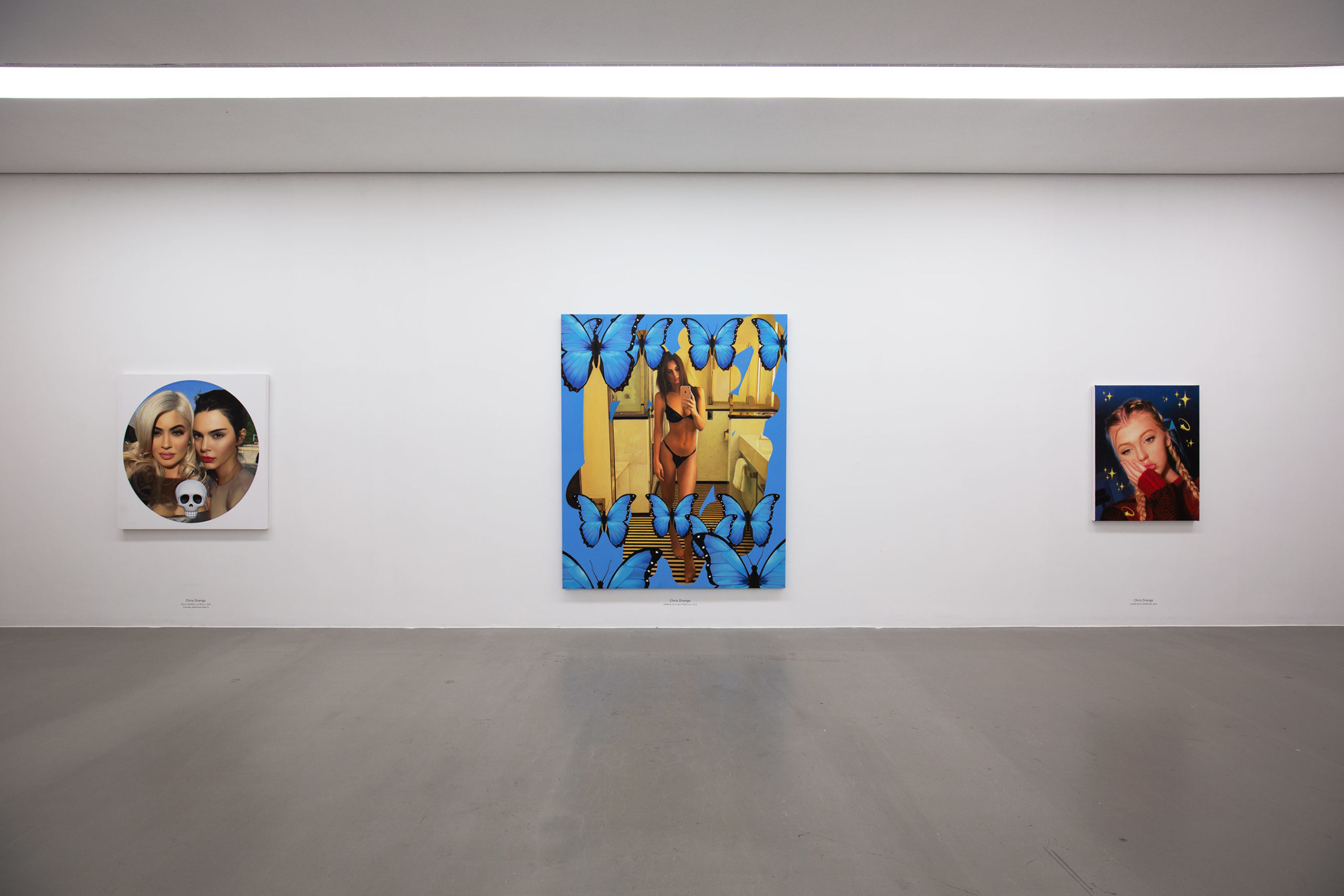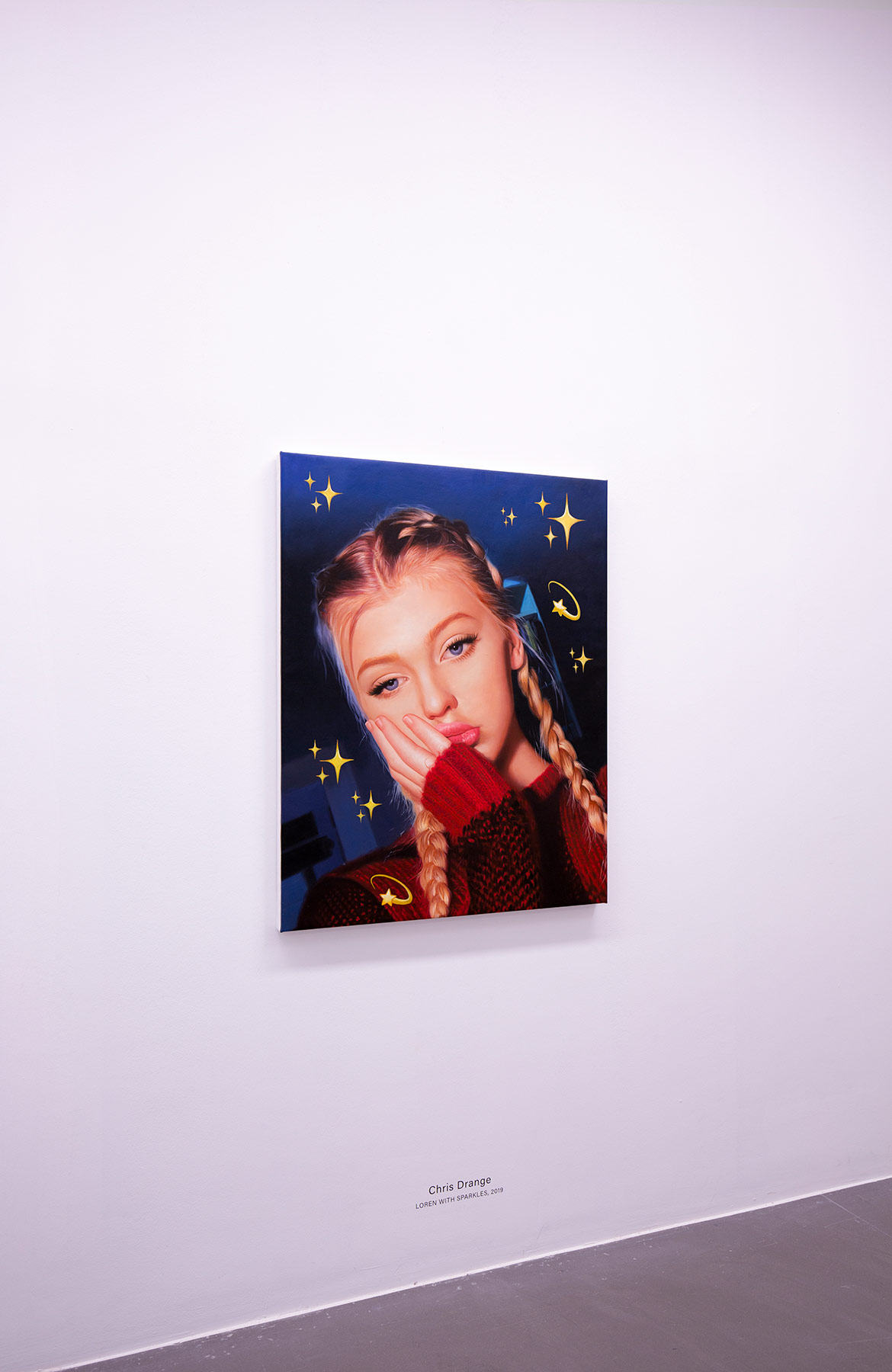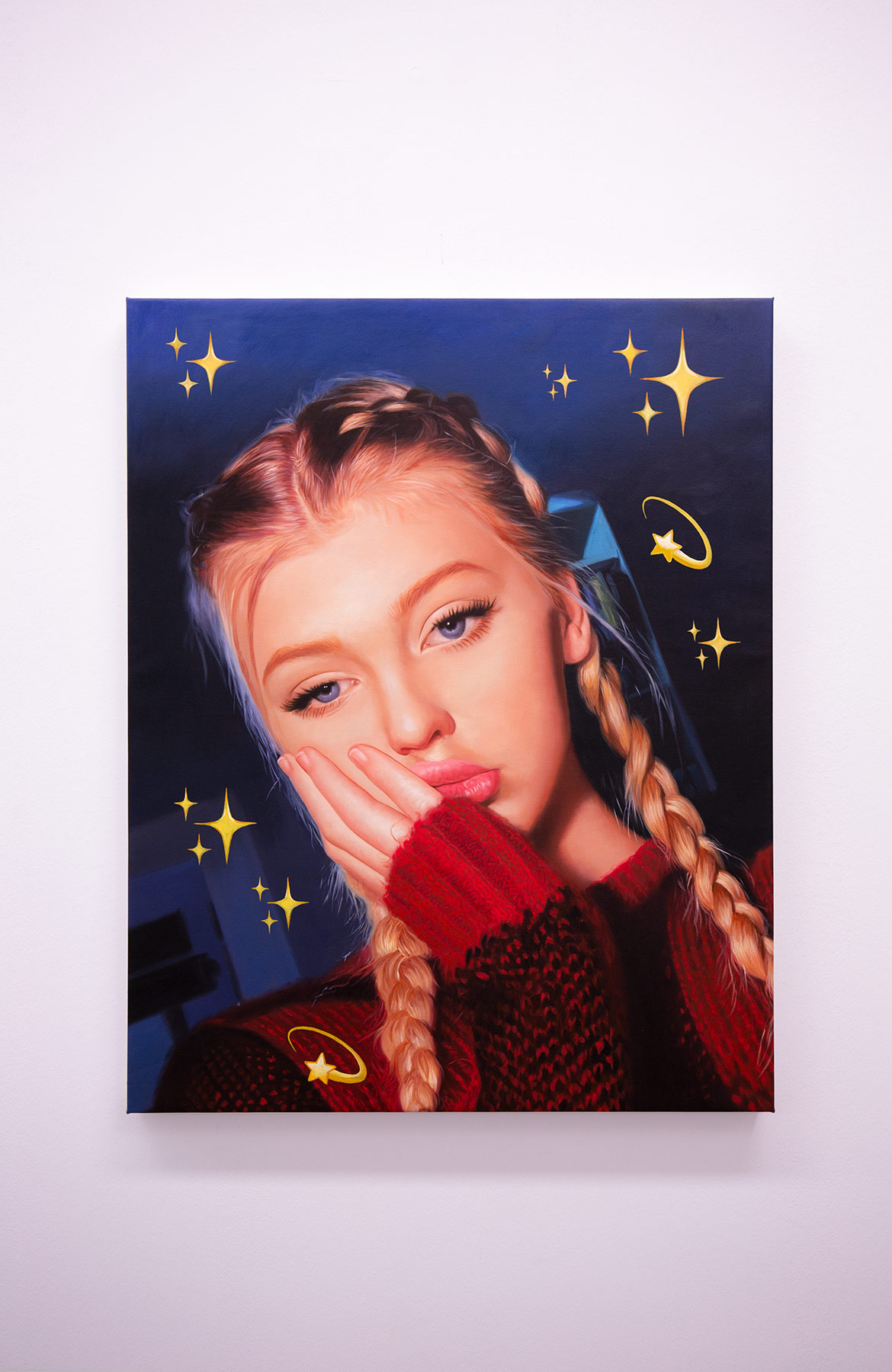The Artist Is Online
The Artist Is Online.
Painting and Sculpture in the postdigital age
KÖNIG, Berlin
18 March - 18 April 2021

KÖNIG presents the international group exhibition THE ARTIST IS ONLINE. PAINTING AND SCULPTURE IN THE POSTDIGITAL AGE curated by Anika Meier and Johann König. In the gallery around 70 works are shown by 50 artists, who are at home on social media. In the media of painting and sculpture, they react to the mechanisms of the attention economy and to technological innovations. They digitize painting, visualize data sets and reflect the mobility of images.
Art critic Isabelle Graw writes that today’s new found interest in painting – has it ever gone away? – can be explained by internet platforms such as Instagram, Facebook and Twitter. In her essay “The Value of Liveliness” Graw notes: “I believe that painting is particularly well positioned in such a society because it gives the impression of being in life of the author.”
After artists have used Instagram to perform over the past ten years, painting now is able to redeem what social media has triggered: the longing for limitless individuality. Which is what it’s all about on the screen: the pursuit of individuality and indulging in consumption accompanied by a greed for attention.
For the generation of artists born around 1990, painting in the post-digital age has become a mashup of art-historical references, most evidently, when the styles of the Old Masters, Surrealism, Pop Art and Post-Internet Art are sampled.
The result is portraits of people, bodies and animals that lose themselves in pathetic poses. Femininity is deconstructed (Sarah Slappey, Rosie Gibbens) and masculinity is over-performed (Pascal Möhlmann, Evgen Copi Gorisek). The cult of self-expression is celebrated (Chris Drange) and consumerism is exhibited (Oli Epp, Travis Fish).
While content-related access to painting in the post-digital age is one possibility, formal access via the integration of technology is another. Augmented Reality, Virtual Reality and Artificial Intelligence can all be used to digitise painting.
Ai-Da is a humanoid robot and an artist who arguably proves that an artificial intelligence can produce a creative achievement. According to her creator, the gallery owner and art dealer Aidan Meller, that means creating works that are new, surprising and have value. She has cameras in her eyes and paints and draws what she sees. Is Ai-Da creative? Is her art good? And is the question of whether her art is good even relevant?
The French artist Ben Elliot meanwhile creates PERFECT PAINTINGS generated by software based on data about the most popular contemporary works, while American Gretchen Andrew hacks Google to fulfil her wishes and dreams: a cover story in Artforum, winning the Turner Prize, participating in Art Basel Miami Beach and now an auction record.
Artists:
Trey Abdella, Ai-Da, Gretchen Andrew, Daniel Arsham, Banz & Bowinkel, Aram Bartholl, Arno Beck, Lydia Blakeley, Ry David Bradley, Arvida Byström, Damjanski, Stine Deja, Rachel de Joode, Maja Djordjevic, Chris Drange, Johanna Dumet, Hannah Sophie Dunkelberg, Ben Elliot, Oli Epp, Liam Fallon, Travis Fish, Rosie Gibbens, Evgen Copi Gorišek, Cathrin Hoffmann, Andy Kassier, Nik Kosmas, Brandon Lipchik, Jonas Lund, Miao Ying, Pascal Möhlmann, Rose Nestler, Hunter Potter, Grit Richter, Rachel Rossin, Manuel Rossner, David Roth, Aaron Scheer, Pascal Sender, Sarah Slappey, Fabian Treiber, Theo Triantafyllidis, Anne Vieux, Amanda Wall, Fabian Warnsing, Thomas Webb, Jessica Westhafer, Anthony White, Chloe Wise, Hiejin Yoo, Janka Zöller
Installation view: The Artist Is Online. Painting and Sculpture in the post digital age
© Roman März
https://www.koeniggalerie.com/
Der River
Der River
Baumwollspinnerei, Leipzig
21 February - 04 April 2020

Im Februar 2020 präsentierte die Bildhauerei-Klasse von Michael Sailstorfer (AdBK Nürnberg) gemeinsam mit den Malerei-Klassen von Gregor Hildebrandt (AdBK München) und Anselm Reyle (HfBK Hamburg) ihre Werkschau „Der River“.
Die genreübergreifende Gruppenausstellung in der WERKSCHAU Halle 12 und im INTERGESCHOSS 14 zeigt mehr als 30 ausgewählte, künstlerische Positionen der jeweiligen Akademieklassen aus den Bereichen Bildhauerei, Malerei, Grafik und Zeichnung.
Neben der Förderung des akademischen Austausches und der Netzwerkbildung fungiert die Ausstellung als spannendes Experimentierfeld für künstlerische Produktion und Präsentation.
Teilnehmer_innen: Tizian Baldinger I Marie Boiselle I Federico Braunschweig I Natalie Brehmer I Merabi Danelia I Julia Emslander I Erik Esso I Philipp Eyrich I Peter Feermann I Moritz Haas & Robert Bergmann I Jakob Harms I Josepha Hartmann I Brigitte Hoffman I Christian Holze I Kaoru Hoshino I Angelika Huber I Lou Jaworski I Daniela Koch I Lara Koch I Lisa Marie Konietzny
Jaemin Lee I Sophie Lindner I Katsuhiko Matsubara I Frank Moll I Maria Moritz I Matthew Muir I Eva Maria Neubauer I Ly Nguyen I Peter Oberloher I Anton Ostler I Liting Pan I Jonathan Regen I Chris Drange I Merlin Reichart I Boris Saccone I Christian Schreiber I Gemma Solà I Ludwig Stalla I Franz Stein I Anna Steward I Milen Till I Daniel Vier I Xiyao Wang I Albrecht Wilke I Kay Yoon I Esther Zahel
All installation views courtesy of the artist
https://www.spinnerei.de/
Link in Bio
Link in Bio.
Kunst nach den sozialen Medien
Museum der bildenden Künste, Leipzig
17 December 2019 — 15 March 2020

The use of social media has become an everyday activity, one that established and young artists cannot, and indeed do not want to, do without. They work with it. They are where their audience is. At first it was websites, today it is social media, particularly Instagram, when it comes to visual art.
After the protagonists of Net Art, the technology Utopians of the early 1990s, discovered that the web would not replace the classic art institutions as exhibition venues, the next generation of artists emerged and responded to the internet. The term Post-Internet Art took hold, coined by the artist and theorist Marisa Olson: “I’m going to toggle back and forth between video and internet because some of the internet art that I make is on the internet, and some is after the internet.” What at first sounds like an attitude evolved into a collective expression for artists that were looking to make art for exhibitions again, rather than art in the browser.
In turn, Social Media Art seizes upon the Utopia of Net Art, with the ability to democratise the art world. The audience can be reached directly via Instagram, Facebook, YouTube, Tumblr and Twitter. Young artists are responding to social media and its content, to new features and technology.
The show “Link in Bio. Kunst nach den sozialen Medien” at the Museum der bildenden Künste Leipzig is curated by Anika Meier and presents over 50 works illustrating how the production and reception of art are changing in the age of social media. Installations, photographs, sculptures, videos and paintings are shown in the exhibition. The show was developed as a follow-up exhibition to “Virtual Normality. NetzkünstlerInnen 2.0” (2018).
Artists involved: Thomas Albdorf, Lisette Appeldorn, Jeremy Bailey, Cibelle Cavalli Bastos, Viktoria Binschtok, Aram Bartholl, Arvida Byström, Nadja Buttendorf, Petra Cortright, Filip Custic, Stine Deja & Marie Munk, Chris Drange, Constant Dullaart, Hannah Sophie Dunkelberg, Anna Ehrenstein, Oli Epp, Séamus Gallagher, Tom Galle, Adam Harvey, Lauren Huret, Johanna Jaskowska, Andy Kassier, Hanneke Klever, Florian Kuhlmann, Lynn Hershman Leeson, Brandon Lipchik, Jonas Lund, Echo Can Luo, Ines Marzat, Jillian Mayer, Florian Meisenberg & Anna K.E., Rosa Menkman, Marisa Olson, Andy Picci, Sebastian Schmieg, Leah Schrager, Kristina Schuldt, Thomas Webb, Selam X und Steffen Zillig
Funded by: Kulturstiftung des Bundes.
Installation view: Link in Bio, Museum der bildenden Künste, Leipzig, 2019/20
All installation views courtesy of the artist
https://mdbk.de/
